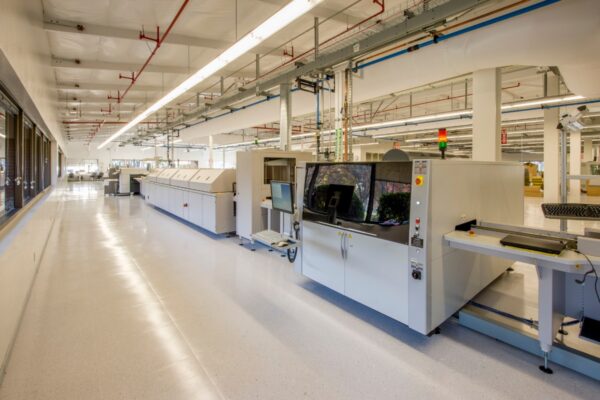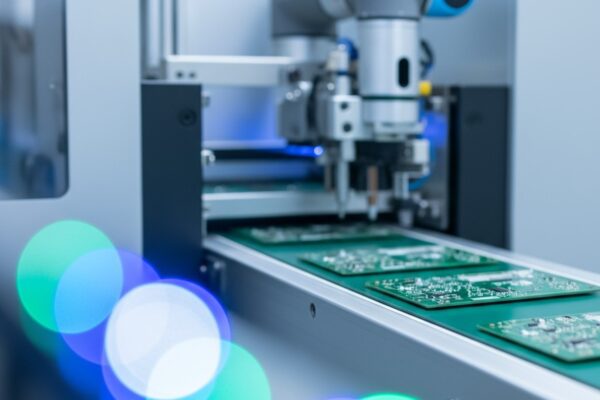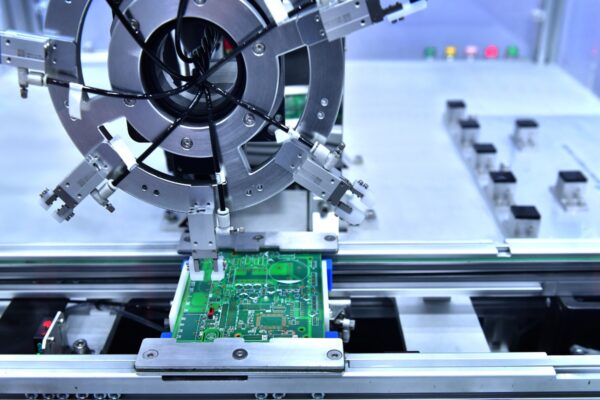Reworking a failed QFN package on a dense analog board shouldn’t risk destroying the entire assembly. Too often, it does. The culprit is a thermal pad stencil designed only for initial assembly, not for the reality of component replacement. A solid aperture that deposits a thick layer of paste may create a robust thermal link during production, but that same mass of solder becomes a stubborn heat sink during rework. It spreads damaging thermal energy across tightly packed components, turning a simple repair into a cascade of failures. On high-value boards where components are separated by tenths of a millimeter, a single rework attempt can cause micro-balling, solder bridging, or thermal shock to adjacent precision devices, scrapping the entire board.

Reworkability isn’t a secondary concern; it’s a critical design input that must shape stencil geometry from the start. The key to clean rework is a pattern that deliberately reduces thermal pad paste volume. Windowed aperture designs create preferential heat paths, localizing thermal energy on the target component instead of dumping it into the surrounding board. This approach means accepting a modest reduction in initial solder volume. This isn’t a compromise—it’s an optimization for the assembly’s total lifecycle, where the ability to replace one part without collateral damage is worth more than a marginal gain in thermal conductivity.
The stencil design that achieves this is not complex, but it is deliberate. It combines windowpane aperture patterns—dividing the thermal pad into a grid of discrete solder islands—with a thinner 4 to 5 mil stencil. These choices shift the thermal mass equation in favor of rework access while preserving more than enough solder coverage for thermal performance in most analog applications. The resulting joints are engineered for reversibility.
The Rework Imperative for Dense Analog Assemblies
On modern analog boards, rework is a question of physics, not just technician skill. When a QFN is surrounded by 0402 passives at 0.5 mm spacing, the thermal energy needed to reflow its solder joints never stays put. Heat bleeds through the board, the solder mask, and most critically, through the bulk solder of the thermal pad itself. If that solder mass is large, it acts as a thermal reservoir that must be brought to reflow temperature before the chip can be removed. The energy required to heat that reservoir is the same energy that damages the surrounding components.
The economic consequence is straightforward: a rework attempt that causes solder to bridge to an adjacent fine-pitch component, or that thermally shocks a precision voltage reference into drifting, converts a single failure into a scrapped board. In prototyping or low-volume production, where board costs are high and lead times are long, this is unacceptable. The cost of designing the stencil to prevent this is negligible compared to the cumulative value of every board destroyed during rework.
Dense analog layouts amplify this challenge by leaving no thermal margin. A discrete power QFN on an isolated section of a board can tolerate imprecise heating because nothing critical is nearby. A QFN integrated into a packed signal chain, surrounded by matched resistor networks and low-offset op-amps, cannot. The difference isn’t the rework tool or the operator; it’s the thermal mass the stencil design put on the board. The thermal pad is typically the largest single solder joint, often holding 40 to 60 percent of the component’s total solder. A solid aperture forces a rework station to melt this entire mass at once, creating a heat demand that standard tools can’t meet locally. Operators are forced to increase airflow temperature or dwell time, both of which expand the thermal footprint and guarantee collateral damage. The solution isn’t a better tool; it’s reducing the thermal mass the tool has to fight.
How Excessive Paste Volume Compromises Rework
Excessive thermal pad paste creates predictable failures. These aren’t abstract risks; they are the direct result of solder geometry interacting with the heat of a rework tool. A solid stencil aperture creates a solder joint with high thermal mass. While this might seem ideal during initial production—offering full wetting and strong attachment—it becomes a source of multiple failure mechanisms during rework.
The first problem is heat retention. Solder is a poor thermal conductor compared to copper, but it’s far better than air. When a rework tool applies heat, a large, solid solder joint absorbs and distributes that energy broadly before reaching its melting point. This is the opposite of what rework requires. Effective rework depends on a steep, localized thermal gradient that melts the solder at the component interface without overheating the surrounding board. A massive solder joint defeats this by acting as a thermal buffer, forcing the process to heat a larger area to get the job done. This leads to two specific, damaging outcomes: voiding and solder displacement.
Voiding from Trapped Flux Volatiles

Voids form when gas, primarily from vaporized flux, gets trapped in solidifying solder. In a well-designed joint, these volatiles escape before the solder freezes. But in a large, solid thermal pad, the geometry works against this. As the paste reflows, vaporized flux generates pressure. If the joint is a grid of smaller islands (a windowpane pattern), the gas can easily migrate to the edges and escape. In a large, continuous mass, the path to the edge is too long. The molten solder’s surface tension traps the gas, which forms voids as the joint cools.
Rework makes this problem worse. A joint being reworked has already been through one reflow cycle, consuming much of its flux. When reheated, the remaining flux activates, but there’s less of it to help the solder coalesce and release trapped gas. Rework heating is also faster and less uniform than production reflow, creating thermal gradients that exacerbate gas entrapment. The result is even more voiding.
This isn’t just a cosmetic defect. In a thermal pad, voids degrade thermal conductivity, increasing the thermal resistance between the component and the board. For components like high-current MOSFETs or precision analog ICs that rely on the thermal pad for cooling, this can push the junction temperature beyond its safe operating limit. The irony is that the solid aperture, chosen to maximize thermal performance, can ultimately degrade it by promoting voids.
Micro-Balling and Paste Displacement
The other major consequence of excessive paste volume is the lateral displacement of molten solder. This appears as micro-balling or solder beads in the area surrounding the component. When the large pool of molten solder is agitated—by pressure from the rework nozzle or the violent release of trapped flux gases—portions of it can be expelled from the joint. In a dense assembly, this expelled solder lands on the solder mask or between component pads, solidifying into tiny, conductive spheres.
A thick stencil, such as one that is 6 mils, combined with a solid aperture makes this inevitable. The deposited solder volume can exceed the wettable area of the pad, especially if the pad is solder mask defined with imperfect registration. During reflow, this excess solder beads up at the edges of the joint. During rework, it’s the first material to melt and the most likely to be displaced. For an analog board with precision resistors or low-leakage nodes next to the QFN, a single solder ball can create a short or a leakage path that destroys functionality.
The flux itself can act as a transport mechanism. At reflow temperatures, flux becomes a low-viscosity fluid that can carry molten solder particles with it as it spreads. It wicks into the narrow gaps between pads, carrying micro-solder with it and leaving behind conductive contamination when it cools.
Windowpane Aperture Patterns: The Strategic Solution

A windowpane aperture isn’t a compromise; it’s a strategic reconfiguration of the solder joint. Instead of a single large opening, the stencil aperture is divided into a grid of smaller openings, creating discrete solder islands separated by solder-free gaps. The resulting joint is a series of isolated connections, not a single monolithic block.
This geometry directly attacks the failure modes of excessive paste. The gaps between solder islands serve two functions: they give flux volatiles an easy escape route, drastically reducing voids, and they slash the joint’s total thermal mass. This reduction in thermal mass is what enables clean rework. A joint with 50 percent solder coverage requires roughly half the heat energy to reflow. This translates directly to a tighter thermal profile during rework, confining heat to the target component and protecting its neighbors.
The difference is obvious during the rework process. The solder islands of a windowpane pattern reach reflow temperature faster and more uniformly. The gaps allow hot air from the rework tool to penetrate closer to the board, improving heat transfer. With less solder volume to heat, rework dwell time is shorter, which means less thermal exposure and less risk of collateral damage for the entire assembly.
Aperture Geometry and Heat Distribution
The gaps in a windowpane pattern are engineered channels for heat and gas. During rework, these air gaps allow heated air to reach deeper into the component-board interface, improving the efficiency of the process.
The gap width must be large enough to allow airflow but narrow enough to prevent solder islands from merging during reflow. A gap of 0.5 mm to 1.0 mm is typical for QFNs in the 5 mm to 7 mm range. The individual solder islands are typically uniform squares or rectangles, which simplifies stencil design and ensures even paste release. The primary design variable is the total coverage percentage—the ratio of solder area to total pad area. Coverage between 50 and 70 percent is common for rework-optimized designs. A 50 percent pattern halves the thermal mass, providing maximum reworkability. A 70 percent pattern offers a more modest rework benefit but preserves more of the original thermal conductivity. The choice depends on the component’s thermal needs and the density of the surrounding layout.
However, a poorly executed windowpane pattern can fail. The most common error is making the gaps too narrow, which allows solder to bridge between islands and recreate a solid joint. Other mistakes include irregular island sizing, which can cause uneven heating, or failing to account for paste slump with thin stencils. The pattern must be implemented with precision to work.
Stencil Thickness Selection for Rework Compatibility
Aperture pattern defines where paste goes; stencil thickness defines how much. The two variables must be chosen together. For rework-optimized designs, a thinner stencil in the 4 to 5 mil range provides a significant reduction in paste volume without compromising joint reliability for most applications.
Standard production stencils are often 5 to 6 mils thick. Moving to a 5 mil stencil from a 6 mil one reduces paste volume by nearly 20 percent. This lost volume translates directly into less thermal mass, shortening rework time and reducing thermal exposure for nearby components.
The trade-off is the potential for insufficient paste on fine-pitch perimeter leads. The aperture’s aspect ratio (width to thickness) must be high enough for reliable paste release. For a 0.5 mm pitch lead with a 0.25 mm wide aperture, a 5 mil stencil gives a 2:1 aspect ratio, which is borderline. A 4 mil stencil improves the ratio to 2.5:1, enhancing paste release. Thinner stencils can therefore improve print quality on fine-pitch leads while simultaneously reducing thermal pad paste volume—a combination perfectly suited for dense analog assemblies.
Recommended Thickness Ranges:
- For rework-focused designs (50-70% windowpane): 4 to 5 mil thickness.
- For high thermal performance with some reworkability (solid pad): 3 to 4 mil thickness, requiring tighter process control.
- For standard production (rework not a priority): 5 to 6 mil thickness.
This strategy is even more critical with lead-free solder alloys like SAC305. Their higher reflow temperatures (240-250°C) increase the thermal energy required for rework, amplifying the thermal mass problem. For lead-free boards, the benefits of reduced paste volume from windowpane patterns and thinner stencils are even more pronounced.
Balancing Thermal Performance Against Rework Reality
Designing a thermal pad stencil is a balancing act: maximize solder for thermal conductivity, or minimize it for rework access. In some high-power applications, the thermal demands are absolute, and any reduction in conductivity is unacceptable. In those cases, the design must prioritize thermal performance and either accept difficult rework or incorporate other thermal management strategies like thermal vias or external heat sinks.
For most analog QFNs, however, the thermal requirements are not absolute. The solder joint is just one of several thermal resistances in the path from the silicon junction to ambient air, and it’s often not the dominant one. The resistance from the junction to the component case, and from the board to the air, are frequently larger. In these systems, reducing solder coverage from 100 percent to 60 percent might increase the joint’s thermal resistance, but the impact on the total system thermal resistance may only be 10 to 20 percent. This is often a perfectly acceptable trade for ensuring reworkability.
The solder coverage percentage is the parameter that controls this trade-off. A 50 percent coverage pattern provides the maximum rework benefit by halving the thermal mass. A 70 percent coverage pattern offers a more conservative balance, retaining most of the thermal performance while still creating escape paths for gas and interruptions in the solder mass. The right choice must be informed by thermal analysis.
Thermal Validation Without Compromising Rework

Thermal validation can be done through simulation or empirical testing. Simulation tools can model the heat flow and predict junction temperature with varying solder coverage percentages, quantifying the impact of the windowpane pattern.
For teams without simulation tools, empirical testing is a reliable alternative. Assemble prototypes with the proposed windowpane pattern, power the component, and measure its temperature with thermocouples or an infrared camera. If the measured temperatures are safely within the component’s specified limits under worst-case operating conditions (max power, max ambient temperature), the design is validated. If not, the solder coverage can be increased or other thermal strategies can be explored.
The goal is to confirm that the reduced paste pattern provides sufficient thermal performance across the entire range of manufacturing and operating conditions. Ignoring the conflict between thermal needs and reworkability is not an option. Discovering that your boards are being destroyed during rework is an expensive and entirely avoidable failure.






